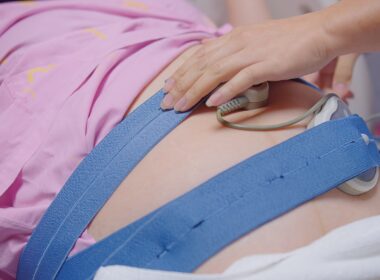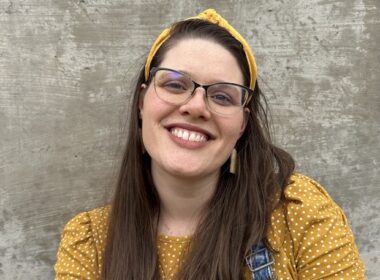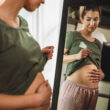Cada vez son más las mujeres que recurren a los métodos de observación de la fertilidad (MAF) no sólo para prevenir el embarazo, sino también como herramientas de control de la salud. Desgraciadamente, muchas mujeres se enfrentan por primera vez a los FAM -y a un conocimiento profundo de cómo está diseñado el cuerpo femenino- sólo a finales de la veintena, principios de la treintena o más allá. Prácticamente todas expresan una versión del mismo sentimiento: ¿Por qué no me enseñaron esto antes??
Las madres de chicas adolescentes pueden preguntarse más, ¿qué y cómo debo enseñar a mi hija sobre sus ciclos, fertilidad y sexualidad? En La guía de la chica feliz para ser completa: Lo que nunca supiste sobre tu cuerpo naturalen un nuevo libro publicado por Lumen Press, Teresa Kenney, enfermera especializada en la salud de la mujer, tiene la misión de enseñar a las jóvenes todo lo que necesitan para vivir una vida sana. debe En la educación sexual se enseñan muchas cosas (pero a menudo no se hace), especialmente sobre los ciclos menstruales y la salud hormonal [1].
Kenney abre el libro con una especie de manifiesto en el que aboga por una comprensión del cuerpo femenino, y de la fertilidad femenina en particular, que contrasta claramente con la visión predominante de la fertilidad como una carga y sólo relevante para las mujeres que desean concebir. Kenney escribe:
"En lugar de una narrativa que dice a las mujeres que deben alterar o suprimir su diseño femenino natural para ser felices y tener éxito, deberíamos crear una cultura que cultive sus dones femeninos, y una sociedad que busque apoyarlas para que prosperen y se mantengan íntegras... Todas las mujeres merecen entender que fueron hechas buenas. Comprender plenamente nuestros cuerpos y dones hormonales es verdadero empoderamiento. Ha llegado el momento de aceptar nuestros ciclos menstruales y procreativos como los increíbles dones que son. Estos dones deben ser respetados, cultivados y celebrados en nuestra sociedad de manera que ayuden a las mujeres a utilizarlos por el bien de sí mismas, el bien de sus familias y el bien de la humanidad."
(Kenney, 10)
Teresa Kenney tiene más de dos décadas de experiencia como enfermera especializada en salud de la mujer, y pasó muchos de esos años trabajando para el Instituto San Pablo VI donde Tecnología NaPro fue desarrollado. También es cofundadora de El genio de las hormonas podcastcuya misión es "inspirar, educar y capacitar a mujeres de todo el mundo para que se conviertan en genios de sus propias hormonas y vean la verdad y la dignidad de su diseño femenino".
¿Cuál es el público destinatario de La guía de la chica feliz para ser completa?
La guía de la chica feliz se dirige a instituto y mujeres en edad universitaria (en la contraportada del libro se lee "Intended for ages 16-24"), aunque podría decirse que cualquier mujer podría beneficiarse del contenido que se aborda. El libro está salpicado de historias de "Casos prácticos" de adolescente y veinteañeros (con seudónimos) a los que Kenney ha atendido a lo largo de los años. Las secciones sobre la salud de las relaciones y el autocuidado están dirigidas específicamente a los adolescente y veinte-algo demográfico.
Aunque el contenido se dirige directamente a las jóvenes, este libro también sería un buen material de estudio para que las madres lo leyeran con sus hijas. En particular, las referencias al sexo son biológicamente exactas, sin caer en la excitación.
¿Cuáles son las principales áreas de contenido de La guía de la chica feliz?
Con sólo 137 páginas de contenido (sin incluir las secciones de recursos y referencias), La guía de la chica feliz es una especie de "minilibro de texto" muy fácil de leer. Las principales áreas de contenido incluyen la anatomía de la masculino y femenino, explicación en profundidad de las hormonas de él y de ella (incluida una fascinante lección sobre las hormonas que se liberan en ambos sexos durante las relaciones sexuales), lo que es normal y lo que no lo es cuando se trata de periodos y ciclos menstruales, una introducción a los FAM y los principales riesgos de cada tipo de menstruación. control de natalidadTodo ello magistralmente presentado en un lenguaje accesible.
Puntos fuertes de La guía de la chica feliz?
Hay mucho que amar La guía de la chica feliz. El diseño gráfico visualmente atractivo mejora significativamente la legibilidad en todo el libro, especialmente en la sección sobre las cuatro fases del ciclo menstrual femenino. Mi gráfico favorito es una brillante y original representación de lo que ocurre simultáneamente en el cuello uterino, el útero, y con las cuatro principales hormonas femeninas durante cada fase del ciclo. Mi contenido favorito incluye por qué la ovulación es el quinto signo vital, lo que indica tanto la salud reproductiva como la salud general del organismo, y por qué la ovulación (en lugar de la menstruación) es el "evento principal" del ciclo femenino.
Y lo que es más importante, el libro ofrece respuestas a las preguntas más frecuentes que se hacen las niñas y las mujeres jóvenes en torno a sus ciclos y su fertilidad, como cuánto (y cuántos días de) sangrado es normal, cuánto dura un ciclo normal de principio a fin (y qué podría significar un ciclo demasiado largo o demasiado corto), si el embarazo es siempre posible para las mujeres (es decir, si las mujeres son siempre fértiles), si el control de la natalidad es la mejor o la única opción para problemas reproductivos comunes como el síndrome de ovario poliquístico (SOP), ciclos irregularessangrado abundante, etc.
Incluso hay una perspicaz entrevista entre Kenney y Dra. Marguerite Duane, fundadora de FACTSque enseña a las mujeres jóvenes cómo plantear a sus médicos su deseo de dejar la píldora o utilizar un método de fertilidad natural (FAM, Natural Fertility Methods) para controlar su salud, e incluso cómo saber cuándo ha llegado el momento de buscar un proveedor diferente (pista: si tu médico insiste en que los FAM son realmente sólo el método del ritmo y no escucha cuando expresas tu deseo de aprender más sobre tu cuerpo a través de una FAM, es el momento).
Limitaciones o puntos ciegos
Me hubiera gustado encontrar un índice al final del libro, especialmente uno con un formato que conectara a los lectores con números de página específicos para encontrar las respuestas a las preguntas sobre salud reproductiva que las chicas y las mujeres jóvenes suelen buscar en Google. También me hubiera gustado que la sección Autocuidado -que aborda de manera importante cómo las mujeres jóvenes pueden optimizar su salud hormonal a través de la dieta, los suplementos, el ejercicio, el sueño, el registro de ciclos y más- incluyera información sobre sincronización de ciclosque facilita la alfabetización corporal y la autoaceptación.
¿Son prácticas las sugerencias de la autora para la mujer media?
El tono realista y las explicaciones directas de Kenney se prestan fácilmente a la adopción de medidas asequibles para su público de adolescentes y veinteañeras, así como para las mujeres adultas en general. Los conceptos básicos sobre el ciclo y la salud hormonal que comparte en el Guía son un punto de partida sólido para que las mujeres jóvenes empiecen a hacer un seguimiento de sus ciclos y signos de fertilidad, especialmente para aquellas que quieren llevar sus datos personales de salud a un proveedor capacitado en medicina reproductiva restauradora (RRM) para trabajar los problemas reproductivos. Ciertamente, en muchas partes del país existen desiertos sanitarios para los proveedores de RRM, pero afortunadamente la telesalud está haciendo que Creighton, Marquette, FEMM y otros instructores de FAM y proveedores sanitarios sean accesibles como nunca antes.
En cuanto a si el contenido del libro está a la altura de su promesa de ayudar a las niñas y las jóvenes a ser "felices" y "completas", el Guía argumenta con rotundidad por qué la adquisición de conocimientos sobre el cuerpo a través del aprendizaje del conocimiento de la fertilidad (y, en su caso, el uso de esos conocimientos para identificar las causas profundas de los problemas del ciclo) es un componente fundamental del bienestar general de la mujer.
El veredicto: Comprar, tomar prestado o saltárselo La guía de la chica feliz para ser completa ¿Todos juntos?
Compré ejemplares de este libro para mí, mi madre, mi hermana y mi cuñada. Dado que cada una de nosotras está geográficamente dispersa por el estado e incluso por el país, mi esperanza es que cada mujer haga La guía de la chica feliz para ser completa en una versión literaria de los vaqueros de La hermandad de los pantalones viajerosy difundir la buena nueva entre amigas y familiares. Este libro merece un lugar en su estantería.
Referencias:
Kenney, Teresa. La guía de la chica feliz para ser completa: Lo que nunca supiste sobre tu cuerpo natural. Lumen Press: 2022 (2ª impresión).
Lecturas complementarias:
Reseña del libro Natural Womanhood: En el Flo de Alisa Vitti
Adolescentes y ciclos irregulares: lo que es normal y lo que no (Parte I)
Adolescentes y ciclos irregulares: lo que es normal y lo que no lo es (Parte II)
Desmontando los 4 mayores mitos sobre los adolescentes y la educación en materia de fertilidad
¿Debe su hija adolescente tomar anticonceptivos hormonales?
Cómo enseñar la regla a tu hija: por qué no hace falta que le des "la charla"







